Hosted at the scenic location in the center of Potsdam, close to the river Havel, this 3rd GeoMonday turned out to be a really nice occasion for all drone enthusiasts. Our first outdoor hands on session was blessed with rays of sunlight from a Indian summer sun.
Thanks again to the interested audience and to all of our fantastic speakers.
The session was kicked-off with the live data collection session using a smart drone, presented by Arno Fischer, professor at the University of Applied Sciences Brandenburg.
Here is the spectacular video from our session ground:
[slideshare id=53239265&doc=fhbgeomonday-2015-potsdam-150927082750-lva1-app6891]
Immediately afterwards Frank Neitzel, professor at the Technical University (TU) Berlin, told us how to build a drone from very affordable components and get the system working.
Our third speaker of the evening was Martin Scholl. In his presentation he gave insights of a project equal to OpenStreetMap, the OpenAerialMap in order to create aerial views of the world:
[slideshare id=52780124&doc=201509geomonday2-150915020313-lva1-app6892]
The closing session was held by Christian Janke, Research Engineer at the European Aviation Security
Center (EASC) in Germany. He spoke about the chances and challenges of unmanned aviation.
[slideshare id=53238892&doc=cjgeomonday140915short-150927080011-lva1-app6891]
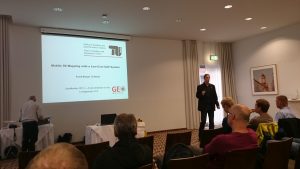
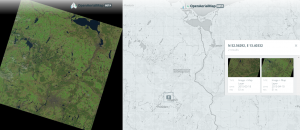

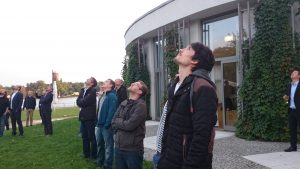
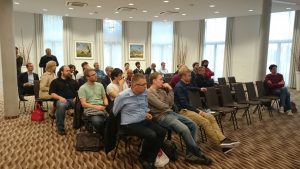
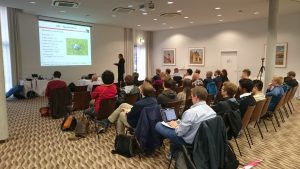

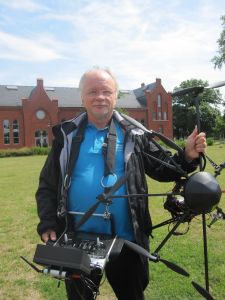 Arno Fischer is a Professor for Operating Systems and Computer Networks at the University of Applied Sciences Brandenburg (FHB). He has been working on drone technologies: Anticollision Systems (Detect and Avoid), Attitude Control, Safety and Security for Drones, Civil Applications and Use Cases with Drones and Teaching Concepts. On Behalf of FHB he is member of UAV-DACH and DIN (NA 131-01-01 AA Arbeitsausschuss Unbemannte Luftfahrtsysteme).
Arno Fischer is a Professor for Operating Systems and Computer Networks at the University of Applied Sciences Brandenburg (FHB). He has been working on drone technologies: Anticollision Systems (Detect and Avoid), Attitude Control, Safety and Security for Drones, Civil Applications and Use Cases with Drones and Teaching Concepts. On Behalf of FHB he is member of UAV-DACH and DIN (NA 131-01-01 AA Arbeitsausschuss Unbemannte Luftfahrtsysteme).
 Frank Neitzel is a Professor for Geo-IT and Geodesy at the Technical University (TU) Berlin. He has a lot of experience in building affordable drones for 3D Geo-data collection and already published related papers.
Frank Neitzel is a Professor for Geo-IT and Geodesy at the Technical University (TU) Berlin. He has a lot of experience in building affordable drones for 3D Geo-data collection and already published related papers.
 Center
(EASC) in Germany. His R&D focus is on Unmanned Aircraft Systems, technology impact assessment in context of legal frameworks and stakeholders. He is currently promoting Unmanned Aviation, like UAV DACH and UVS International in close cooperation with national and international associations. Aim of this engagement is facilitating broad civilian UAS applications by addressing questions like weight classes, visibility minima or insurance context.
Center
(EASC) in Germany. His R&D focus is on Unmanned Aircraft Systems, technology impact assessment in context of legal frameworks and stakeholders. He is currently promoting Unmanned Aviation, like UAV DACH and UVS International in close cooperation with national and international associations. Aim of this engagement is facilitating broad civilian UAS applications by addressing questions like weight classes, visibility minima or insurance context. lso be presented.
lso be presented. Christian Maertins works since of the 1990s as Carsharing, Ridesharing, eTicketing, network electric mobility
Christian Maertins works since of the 1990s as Carsharing, Ridesharing, eTicketing, network electric mobility  The idea of Motion Intelligence and its technology Route360° is to simplify the online search for spatial objects (local search) by the use of sophisticated route planning and travel time analysis and visualization.
The idea of Motion Intelligence and its technology Route360° is to simplify the online search for spatial objects (local search) by the use of sophisticated route planning and travel time analysis and visualization.